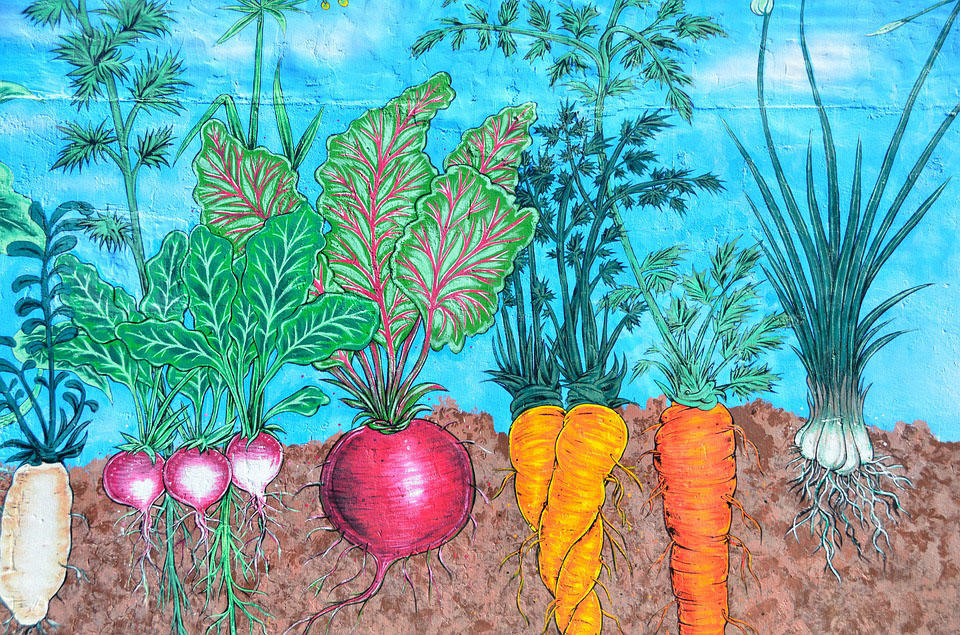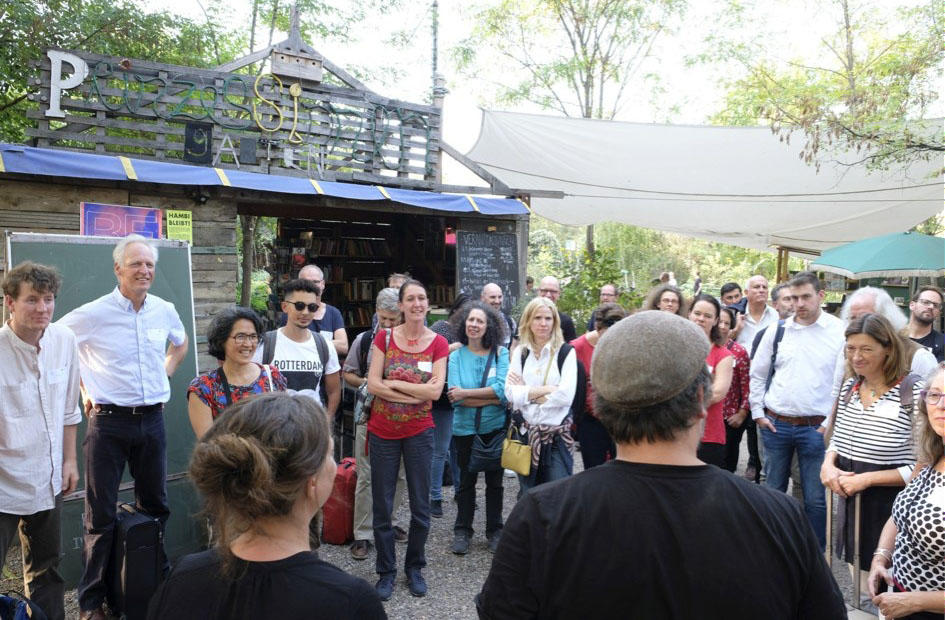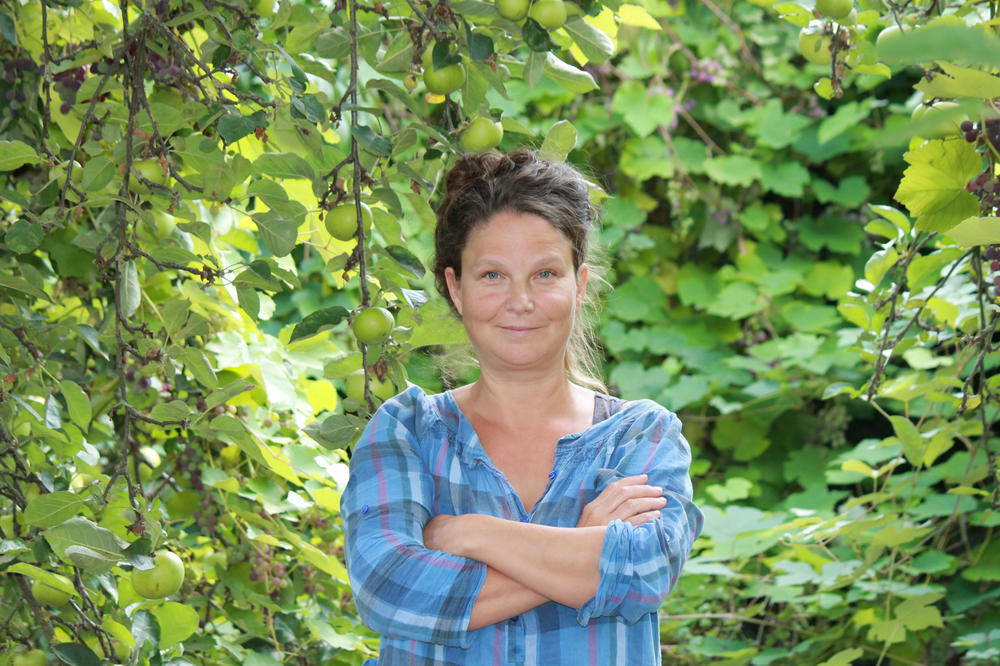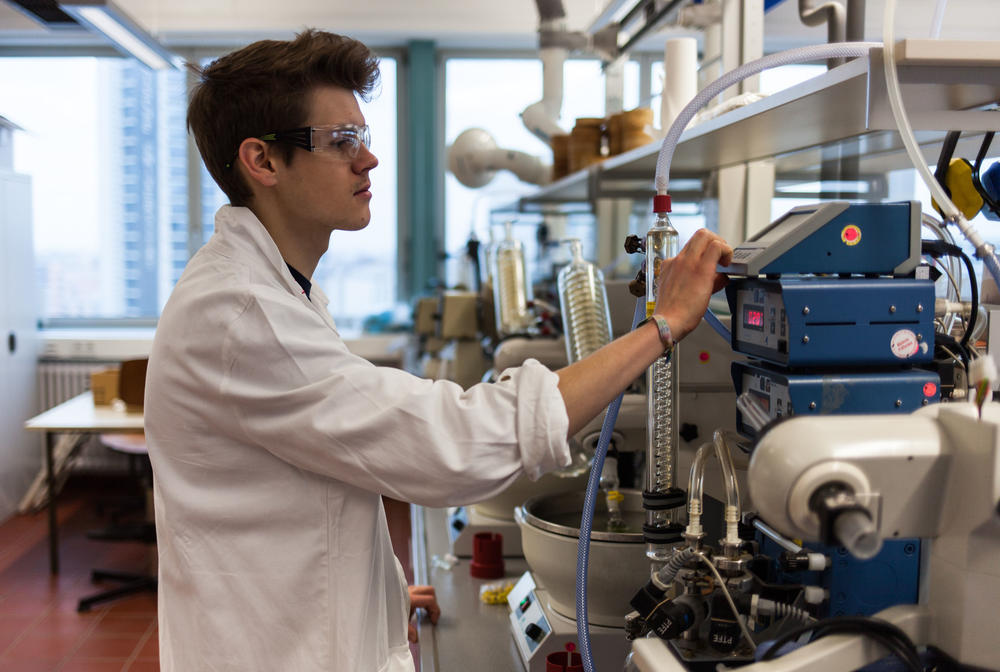When Food Grows in the Middle of the City
The EdiCitNet project promotes local and sustainable food production in cities
Oct 02, 2019
In the project “EdiCitNet,” individual concepts are developed to produce food locally and sustainably in different cities.
Image Credit: Pixabay License
Cities like Rotterdam or the Rhineland-Palatinate town of Andernach are setting an example – and Berlin has also put the local and sustainable production of food in the city on its agenda. Under the heading “Edible City,” over 200 initiatives now exist in Rotterdam. “The best known initiative is certainly Rotterzwam: a company that cultivates mushrooms in an old swimming pool on coffee grounds and sells them to local restaurateurs,” says Ina Säumel. The researcher at the Integrative Research Institute on Transformations of Human-Environment Systems (IRI THESys) at Humboldt-Universität zu Berlin has been working on the concept of “edible cities” for a long time, most recently for several years at Technische Universität Berlin, where she continues to supervise projects on the subject.
“Together with various partners, we are trying to pool the existing knowledge about individual local food production projects in a network.” Ina Säumel
Since the end of 2018, Ina Säumel has headed the project EdiCitNet (Integrating Edible City Solutions for Social Resilient and Sustainably Productive Cities). The objective of the project is to develop individual concepts to produce food locally and sustainably in different cities. “Together with various partners, we are trying to pool the existing knowledge about individual local food production projects in a network, analyze it, and compile it on a digital platform for all interested parties,” explains Ina Säumel.
The project arose from the collaboration between Säumel, who holds a doctorate in biology and geography, and Jörg Niewöhner, a professor of human-environment relations at the Institute of European Ethnology of Humboldt-Universität zu Berlin. Cooperation between the natural and social sciences aims to combine the different ways of thinking and create new synergies for the concrete implementation of projects. Ina Säumel and her interdisciplinary team have brought 35 partners together for this purpose. They include 13 cities, various scientific institutions, nongovernmental organizations (NGOs), and small and medium-sized enterprises with a great deal of expertise in the sector. Among the cities, there are metropolises like Oslo, Rotterdam, Havana, Montevideo, Lomé, and Berlin as well as smaller cities like Andernach, Sant Feliu de Llobregat in Catalonia, or Šempeter pri Gorici in Slovenia.
Is this edible? Project manager Dr. Ina Säumel explains the concept of EdiCitNet to the participants of a workshop in Berlin’s Prinzessinnengarten.
Image Credit: EdiCitNet
“By autumn 2019, five of the partner cities in which edible city projects already exist will have established so-called Living Labs,” explains Ina Säumel. The task of these real-world laboratories is the concrete implementation of individual projects, which are planned in so-called City Teams.
With the help of the scientific coordinators, these City Teams aim to bring together representatives of the relevant stakeholders and interest groups of the respective city, such as the city administration, companies, citizens’ initiatives, and scientists. “The City Team concept is very simple,” explains Ina Säumel. “They are structured like a soccer team: it takes strikers, captains and defenders, managers and coaches to effectively implement concrete projects.”
Each City Team consists of around eleven key players and various consultants who jointly develop the Living Lab. In addition, there will be meetings with other City Teams to exchange information. All the information will later be provided on a digital information platform, the EdiCitNet Tool Box.
“In the Living Labs, concrete projects can be implemented and structural underlying conditions can be amended.” Ina Säumel
Dr. Ina Säumel, who heads the project EdiCitNet, has worked at Technische Universität Berlin and is now working at Humboldt-Universität on the edible city.
Image Credit: RuralFutures
Andernach, which has already started advertising with the slogan “The Edible City,” has decided, for example, to use a specific area as an urban garden. This area is to be cultivated by local kindergartens, schools, refugee homes, and other initiatives. The harvested products are processed in the canteens of the participating facilities.
“In the Living Labs, concrete projects can be implemented and structural underlying conditions can be amended, as in the example of Rotterdam,” Ina Säumel points out. In the Dutch city, measures are to be developed to pool the 200 local initiatives in an umbrella organization and thus ensure their long-term economic survival. A handbook will be drawn up based on the experiences gained from successful initiatives. “The handbook will answer questions such as: What funding measures are there for the edible city? What must be taken into account when approving products for marketing? How can a product be labeled as a Rotterdam product?” clarifies Ina Säumel.
In the Laboratory for Organic Trace Analysis and Natural Substances at the Institute for Ecology, students of Technische Universität Berlin analyze the ingredients of food grown within the framework of the project.
Image Credit: Paul Fiedler
In their City Teams, the eight other partner cities develop concepts about structures that need to be created in order to implement tangible projects. In Berlin, for example, it was possible to bring together all the important Senate Departments for the City Teams, NGOs such as the Mundraub online platform for the discovery and use of edible landscapes, the engineering firm Nolde & Partner for innovative water concepts, and the Roof Water-Farm project for precipitation management.
Questions of governance and participation are also evaluated by the scientific community. Together with scientists from the Laboratory for Organic Trace Analysis and Natural Substances of the Institute for Ecology of Technische Universität Berlin, which is headed by chemistry doctorate Thi Lam Huong Pham, the organic pollutant load in vegetables and fruit growing in our cities is being investigated. In the study project, “How healthy is the edible city? Investigation of Organic Pollutants in Products of Urban Gardens,” students of the Ecology and Environmental Planning course at Technische Universität Berlin take a close look at the products of the EdiCitNet cities. “This is how we successfully connect our research and university teaching,” explains Ina Säumel. “Students deal with the actors of the edible cities, identify barriers and obstacles to their implementation, and work with analytical methods of organic chemistry.”
Further Information
EdiCitNet
The project is located in the Integrative Research Institute on Transformations of Human-Environment Systems (IRI THESys) of Humboldt-Universität zu Berlin. The European Commission is funding “EdiCitNet” with around 12 million euros over the next five years. The Berlin partners, the Senate Department for Urban Development and Housing, Technische Universität Berlin, Humboldt-Universität zu Berlin (IRI THESys), Mundraub, and Nolde & Partner will receive around 3.8 million euros of the total funding amount.




